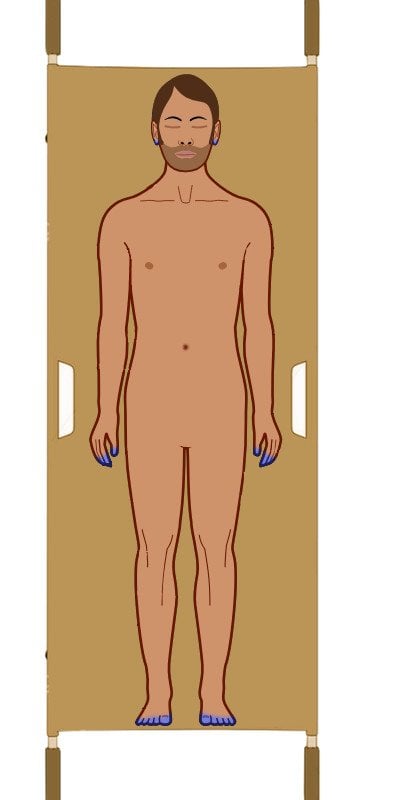Table of Contents (click to expand)
Once death occurs in a body, it undergoes a series of changes that occur in a timely and orderly manner. There are 4 stages: Pallor Mortis, Algor Mortis, Rigor Mortis and Livor Mortis.
Death is one of the most fundamental facts of life. After we die, the body goes through a complex set of changes before the body begins decomposing. These post-mortem changes are divided into 4 stages of changes that occur in the body. They are used primarily to determine the time of death or post-mortem index (PMI) in forensic pathology.
TV crime dramas often use words like lividity and rigor mortis while the forensic expert analyses the victim. Most of us are probably familiar with these signs, even though we might not know their technical terms.
Recommended Video for you:
What Is Death?
For a post-mortem to occur, death must come first.
According to the Uniform Determination of Death Act (UDDA), “An individual who has sustained either (1) irreversible cessation of circulatory and respiratory functions, or (2) irreversible cessation of all functions of the entire brain, including the brain stem, is dead.”
To break that definition down, an individual must be completely brain-dead so that their breathing and blood circulation stops. This specification is important because there are cases when an individual’s lungs and heart are still beating. After all, the part of the brain that controls those functions is still alive. In this case, the cells of the rest of the body can also remain alive because they still have a supply of oxygen. Doctors may keep individuals in this case if that individual has consented to organ donation.
When the heart stops pumping blood, and the lungs stop breathing, cells won’t receive oxygen or nutrients and will begin to die in a matter of minutes.
4 Post-mortem Stages Of Death
After death, the body undergoes a series of changes that occur in a timely and orderly manner. These stages are also affected by the extrinsic and intrinsic factors of the corpse.
By determining the stage and state of decomposition of the body, the pathologist can estimate the time frame in which death occurred, which is essential in medico-legal investigations. Since there is no fixed duration for these stages, it is impossible to determine the exact time of death unless there is a witness or some other verifiable source of this information.
The time difference between the time of death and the body examination is known as the Post Mortem Interval (PMI). The longer the PMI, the larger the time of death window will become, and the harder it will be to determine an accurate time of death.
There are 4 stages that the body moves through after death: pallor mortis, algor mortis, rigor mortis, and livor mortis.

Pallor Mortis
The first change that occurs in a corpse is the increased paleness in the face and other parts. This is due to the cessation of blood circulation.
The capillaries below our skin give us the lively glow of being alive. We don’t realize it unless we blush, but when blood stops circulating to the extremities like the skin, the skin looks pale, like a zombie!
This is the first sign and occurs rapidly, within 15-30 minutes of death. Due to this, it is usually insignificant in determining the time of death unless, of course, death has occurred shortly before the finding of the body. Studies have also proven that paleness is unaffected by gender differences in bodies.
Corneal Opacity
At this time, the cornea of the eyes may begin clouding and turn opaque. This happens when the eye cells break down and cannot shield the cornea from the fluid within the eye, called the aqueous humor.
Algor Mortis
Humans are warm-blooded organisms, meaning we maintain a constant internal temperature regardless of the outside environment. The brain is our thermostat, and the circulatory system is the main heat dissipator. However, within seconds of death, the brain cells begin to die, and the heart stops pumping blood. Without the brain and the blood distributing heat, the corpse eventually starts to match the outside temperature.
Our normal body temperature is 37°C. If the ambient temperature around a corpse is less than that, it usually takes between 18 and 20 hours for the corpse’s temperature to decrease to match the outside temperature.
The rate at which the body’s temperature acclimatizes to the outside environment gives some indication of the PMI. However, it can be affected by several factors, such as fluctuations in outside temperature, the thickness of clothing on the corpse, the place where the corpse has been found, any drugs, or other intrinsic factors that could affect this temperature adjustment, etc.
Several equations are present to determine PMI, like Glaister’s equation and the Henssge Nomogram technique, which try to account for external factors to make the best possible prediction.

Rigor Mortis
Immediately after death, a corpse will go flaccid. All the muscles will become relaxed and limp, but the whole body will stiffen after a few hours. The muscles will now contract and become rigid, a stage called Rigor Mortis.
Rigor mortis is one of the most useful methods of determining the time of death since its progression is mostly predictable.
It can also give forensic investigators crucial clues about a crime. Based on the body’s position in rigor, certain other deductions can be made, such as whether the site where the body was found is the site of death, if the person died in a particular position, etc. Expressions also freeze on the face of a victim, which helps in giving further insight into the nature of their death.
What Causes Rigor Mortis?
Muscles need energy to function. This is provided in the form of ATP (adenosine triphosphate) molecules. Our muscles are composed of 2 bands called myosin and actin. These 2 bands move together towards each other and form bonds. This is how our muscles contract. Energy is then required to break these bonds and let the bands move away from each other, thereby relaxing the muscles.
Immediately after death, the muscles become limp because there is no signal from the brain instructing the muscles to contract. The muscles still have energy reserves that can be used, so the muscles remain relaxed.
After a few hours, though, the energy reserves deplete until they are gone. With no more respiration or food intake, no ATP is produced. Therefore, the muscles freeze in the position they are in. Although it starts affecting the whole body simultaneously, the smaller muscles, like those of the eyelids, face, and muscles of fingers, stiffen first due to their small size.

How Long Does Rigor Mortis Last?
The process of rigor mortis starts within 2 hours of death and usually peaks at around 12 hours. On average, rigor mortis lasts for 24 to 48 hours. This is affected by factors like ambient temperature. Rigor mortis ends due to the decomposition of the muscles and the body, a process called secondary flaccidity.
Livor Mortis
This is the final stage of death.
When the heart stops beating, the blood is now at the mercy of gravity. It tends to collect at certain parts of the body. Depending on the position of the body, these parts would vary. For instance, if the person were flat on their back when they died, the blood would collect in the parts that are touching the ground. If the person were hanging, it would collect in their fingertips, toes, and earlobes.
Lividity starts with the skin where the blood has settled, developing a bright red color. After a few hours, the color changes from red to bluish-purple. This can take 6 to 8 hours.

Initially, when the skin is pressed, it turns white and returns to the bluish color upon removing pressure. After approximately 12 hours, however, the blood gets “fixed” there, and the skin does not turn white. The bluish coloring of the skin is called livor mortis or lividity.
Lividity can give additional insight into the time of death and help investigators determine if the body has been moved from another place. It can also indicate if someone has died from carbon monoxide poisoning, as CO bound to hemoglobin gives a cherry-pink color to the skin.
All these stages of death often overlap. They may start separately, but most of them continue to occur simultaneously. However, other factors are also taken into consideration during investigations. This is mainly because there are factors that can affect these stages considerably. Hence, investigators never rely solely on one or 2 factors but rather consider as many as possible and then draw conclusions from there!
References (click to expand)
- Postmortem Changes - StatPearls.
- Schäfer, A. T. (2000, February 15). Colour measurements of pallor mortis. International Journal of Legal Medicine. Springer Science and Business Media LLC.
- Lee Goff, M. (2009, June 25). Early post-mortem changes and stages of decomposition in exposed cadavers. Experimental and Applied Acarology. Springer Science and Business Media LLC.
- Improving methods to estimate time of death from body ....












